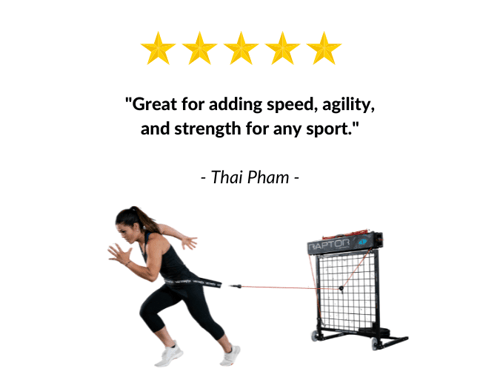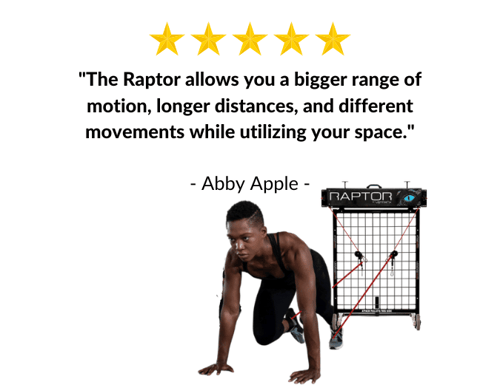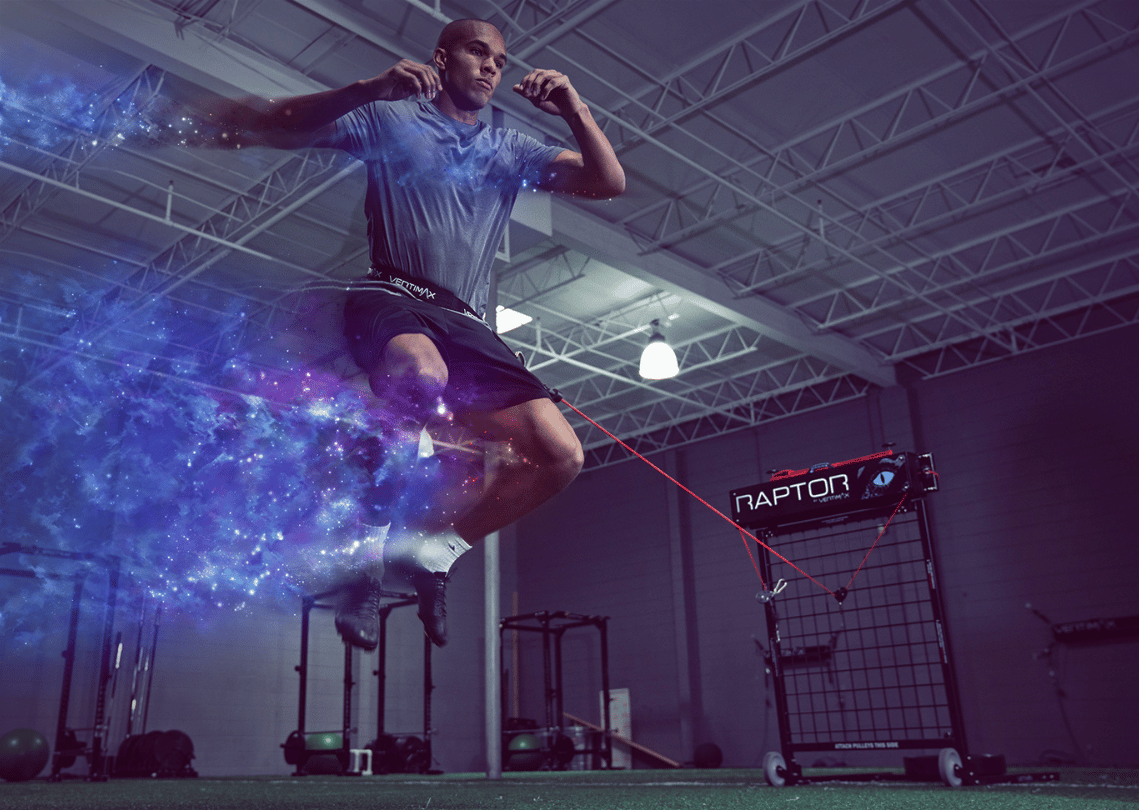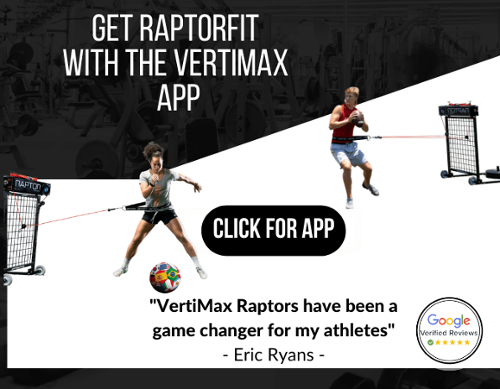VertiMax is changing the way athletes and coaches implement resistance training into their programming. These VertiMax Raptor exercises are perfect for adding resistance assistance to speed and agility training.
Over the last few years, coaches have been implementing VertiMax Raptors in a variety of ways. Coaches can use the consistent Raptor resistance safely in actual training and running movements. The dual band Raptor trains up to 20 yards (with each band) and the Raptor EX (single band) trains up to 40 yards.
You can teach athletes the fundamental key movement patterns while they are training and actually playing their sport. They can then perform Raptor exercises in the warm-up, the actual movement progression, or with plyometrics.
One major benefit of Raptor resistance training is the coach can really focus on coaching. Gone are the days of having to stand behind an athlete while holding onto resistance bands or worrying about band breaking or snapping the athlete back. As a coach, you can now step back and work more closely on athletic mechanics.
In the 5 following exercises, we will include exercises for these different types of speed training:
- Acceleration speed
- Overspeed
- Deceleration speed
- Lateral speed
- Linear speed
- Change of direction speed
5 VertiMax Raptor Exercises For Speed Training
1. Forward Acceleration Power
Acceleration is how fast an athlete can increase his or her speed. Acceleration training is more essential than top end speed training for most athletes. Not to say max speed training isn’t important, but athletes decelerate and accelerate more often in most sports than they reach their top speed. Being able to speed up quickly allows athletes to get dominate in their sport.

2. Overspeed Training
Overspeed training is an intermediate-to-advanced training technique used to help athletes get faster and improve performance.
Using resistance and neural training techniques allows athletes to move at higher speeds than under normal conditions. Post-activation potentiation occurs due to applying the neural training stimulus allowing the athlete to go faster than they previously could go, then removing the assistance athletes keep some of their performance boost.
You can use the Raptor Dual Band or Raptor EX for overspeed training. The Raptor EX allows more momentum and higher training velocities because of the extended range. The following video shows a 2 unit Raptor Ex set up for overspeed training.
3. BackPedal - Forced Deceleration Into Lateral Acceleration
Using the Raptor to increase forward acceleration power from a forced deceleration position. This drill reflects sports moves like recovering from an athlete being forced backward, then recovering to go forward full speed. Use the Raptor resistance in the forward overspeed run, then force the athlete into deceleration, then recovering using the resistance load to force power for lateral acceleration.
Deceleration training is a vital component of any training program because it is important to transition under control through the movements from start to a stop to speeding up again. The inability to slow down efficiently is where excess joint stress can occur and may eventually lead to increased opportunity for injury.
4. Ankle Loaded Lateral Deceleration
Use VertiMax resistance to your deceleration training with the ankle attachments to increase lateral deceleration training movements.

5. Lateral Training And Running With Resistance
Add Raptor resistance to lateral movements to increase core stability, balance and apply work load to frontal plan of the cycle mechanics of sprinting.
Article updated February 2023





.png?width=110&name=Listing%20Image-basketball%20ladder%20drill%20%20(350%20x%20350%20px).png)














